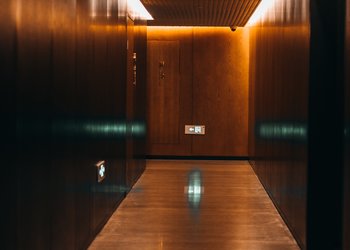REGULAR TESTING, MAINTENANCE, AND REGISTRATION
• Buildings that will be fitted with emergency lighting must have a project plan that is in accordance with the Interior Electrical Wiring Project Regulation, and it must be submitted to the building authorities. Correct planning saves lives.
• The project plan must include all devices to be used, and it must be signed by an expert to verify that it conforms to all relevant standards and regulations.
• If any changes are made over time, then the plan must be updated.
“Project planning in accordance with regulations is not only a legal requirement, but a vital necessity.”
• The Regulation Concerning the Fireproofing of Buildings (RCFB) and the EN 50172 standard require that building users/owners must periodically test the building’s emergency lighting system or have it tested, and for their own sake they must maintain all written records so they can be presented to the official and legal authorities if any adverse outcomes arise.
• All tests must be conducted by an authorised and knowledgeable business/individual, and the results must be recorded.
1.Registers
The results of periodically conducted tests must be kept in a register.The register must be kept in the building by someone selected by the building user/owner, and it must always be at hand so it can be inspected by officials. The person in charge of the system must ensure that it is working correctly. If at the end of a one-year period the required tests are passed and the system continues to work correctly, the building authorities must be presented with a “Test Certificate.”
2.Function Test
This is a short test that is conducted to confirm that the device will switch on as expected during an emergency. It must be carried out at least once a month, and more generally once a fortnight (twice a month). A brief test (around 1 minute long) must be conducted to confirm that emergency lighting and exit luminaires are clearly visible and operational. At the end of the test, the devices must be reconnected to the mains voltage supply, and their charge displays must be checked as well. The results are to be recorded in the register.
3.Duration Test
This test must be performed at least once a year. It is generally performed once every six months (twice a year). It is intended to confirm that all emergency lighting devices operate for the required duration. The results of the test must be recorded in the register.
4.Maintenance and Repair Work
Some components of these devices must be replaced regularly and/or require maintenance. Maintenance must be performed during annual testing (duration testing). During maintenance, the device must be cleaned of internal and external dust, and inspections for damage caused by temperature and ultraviolet light (wear and tear) to the mains connector terminal and lamp and battery sockets must be carried out.



